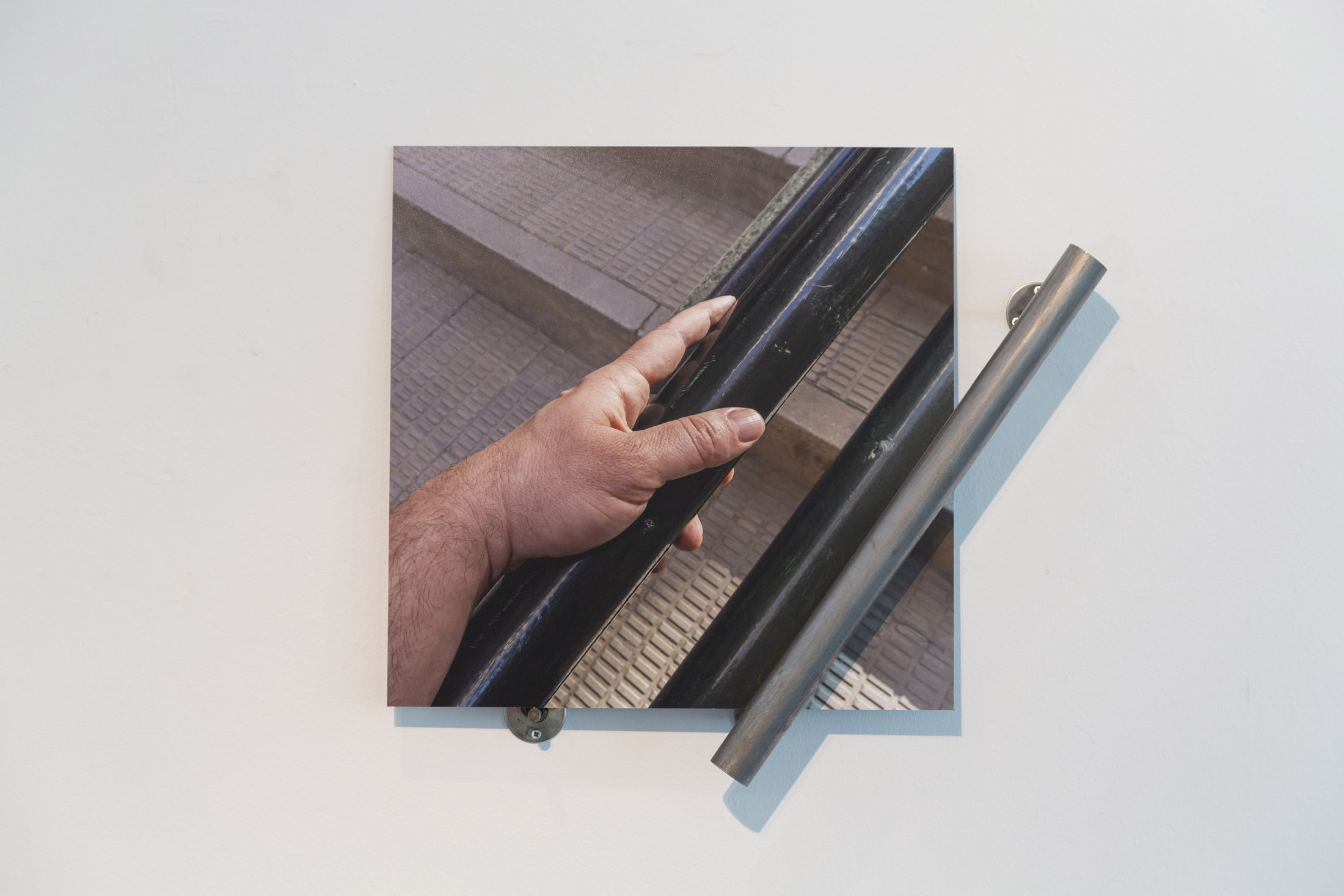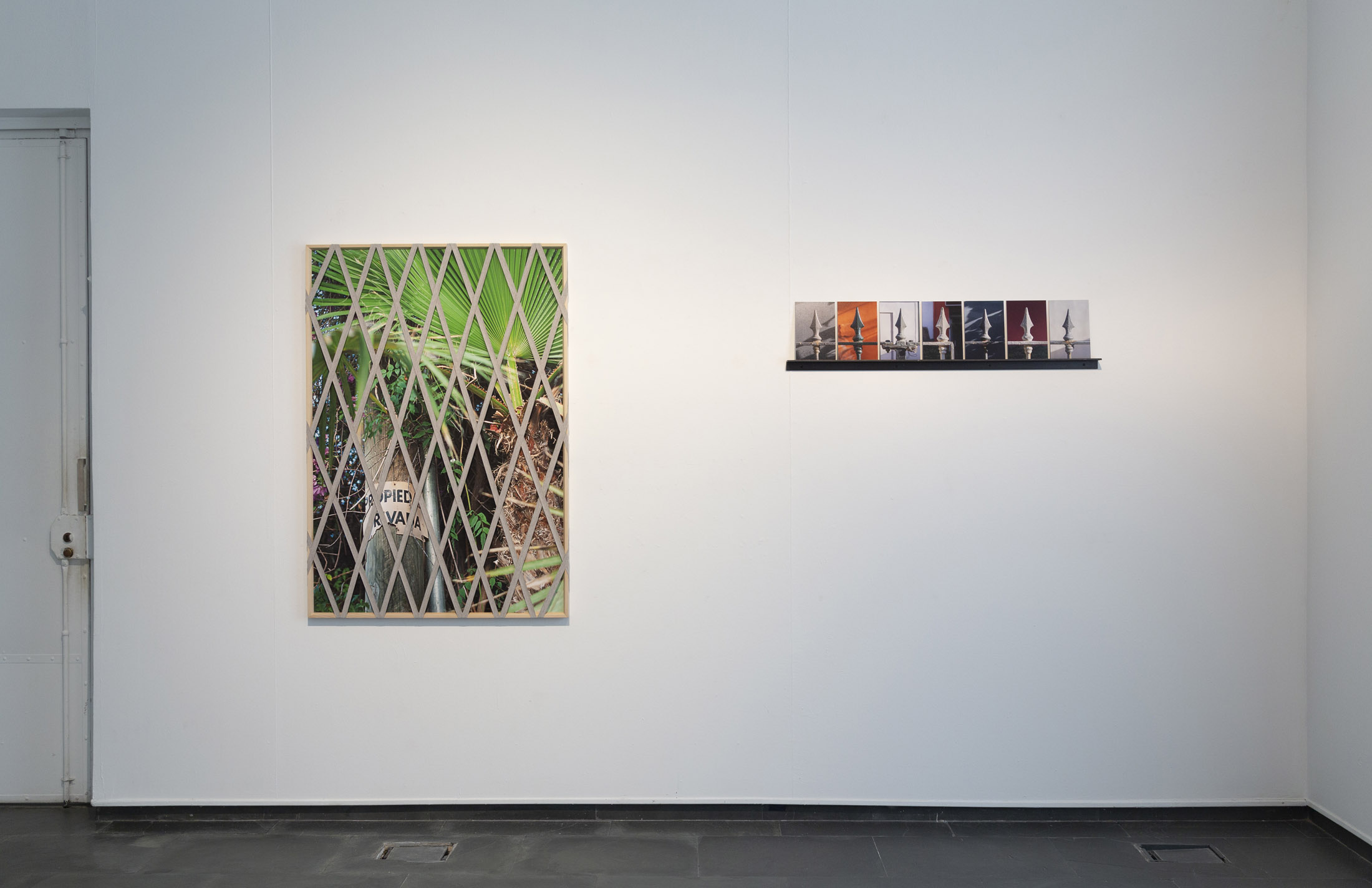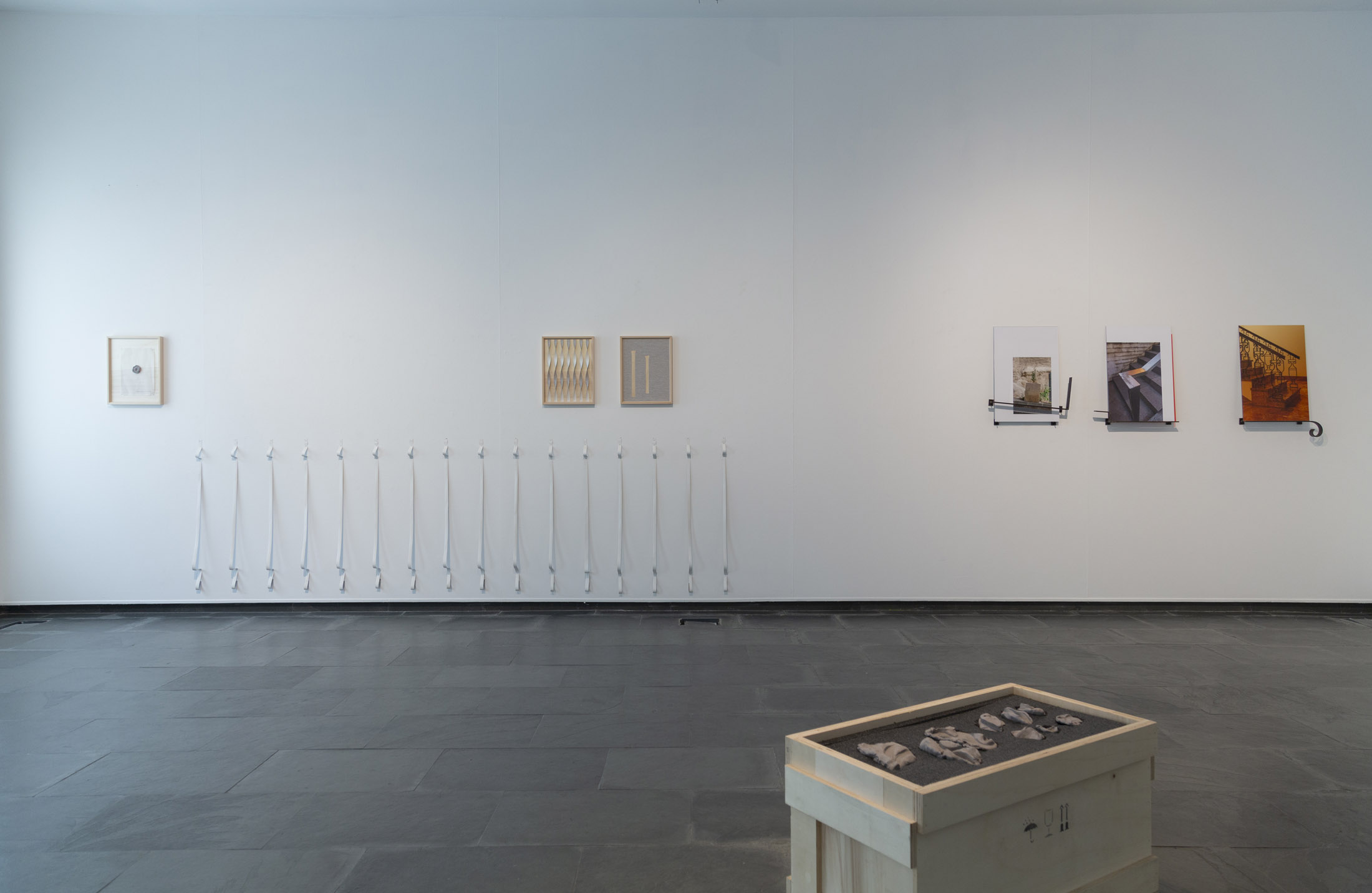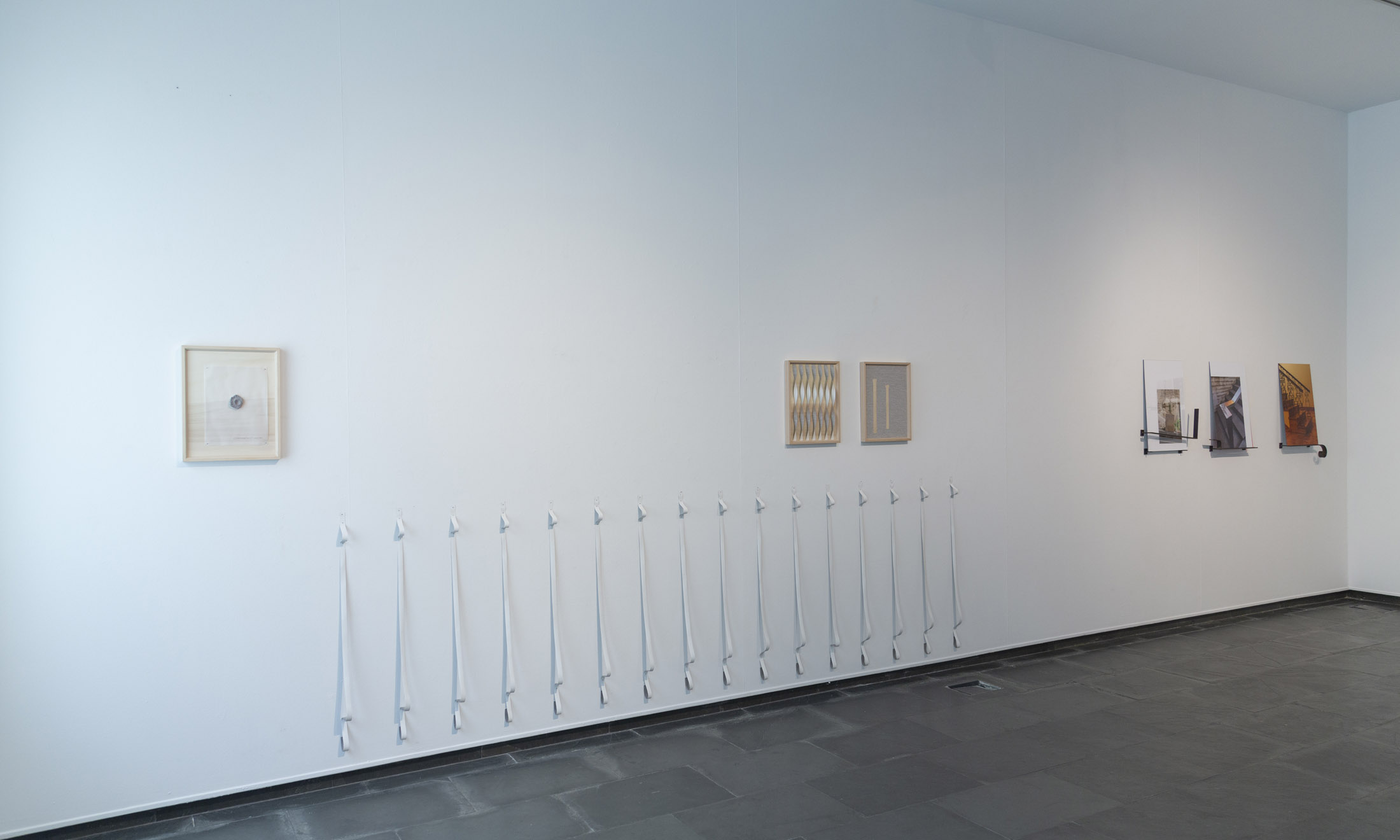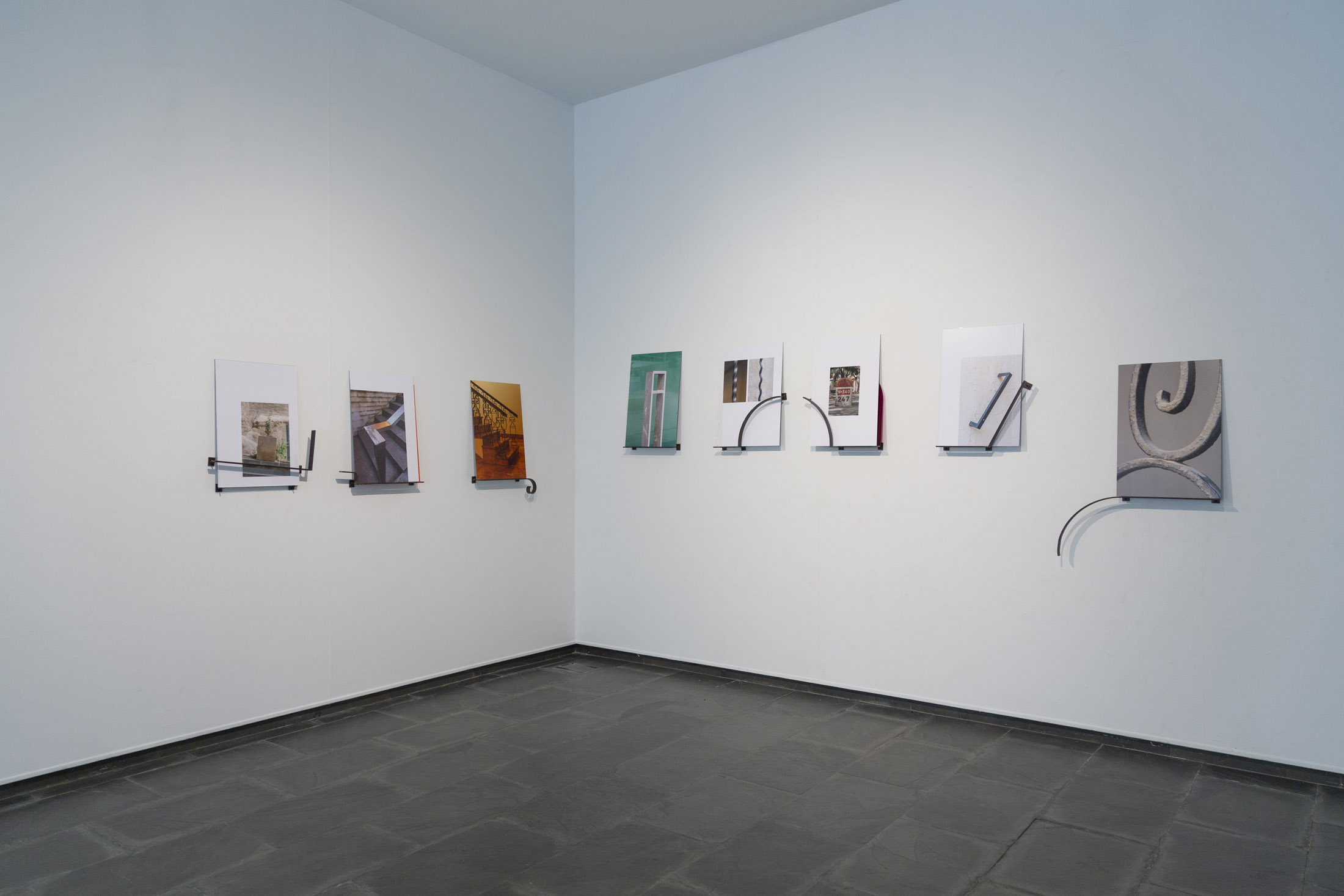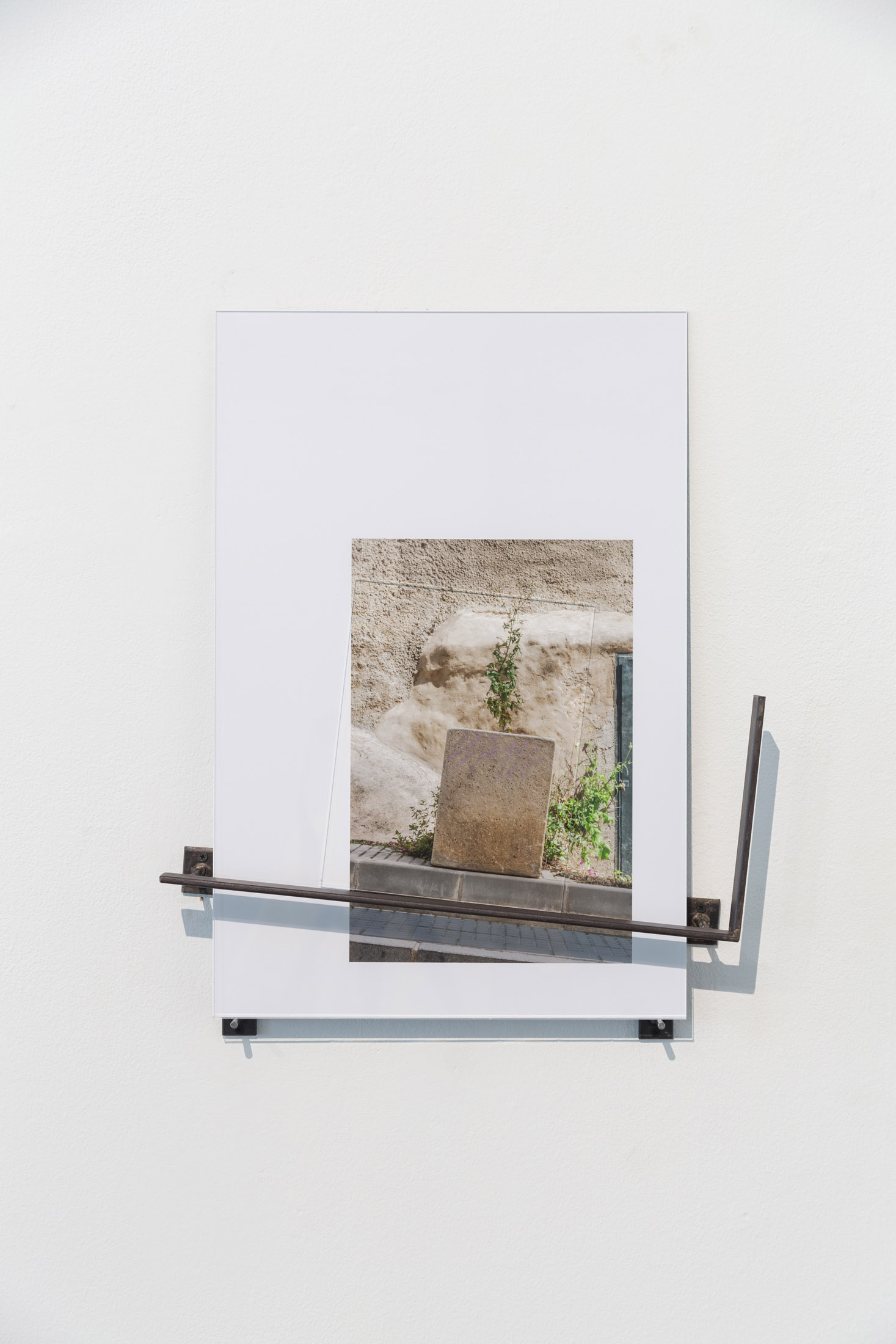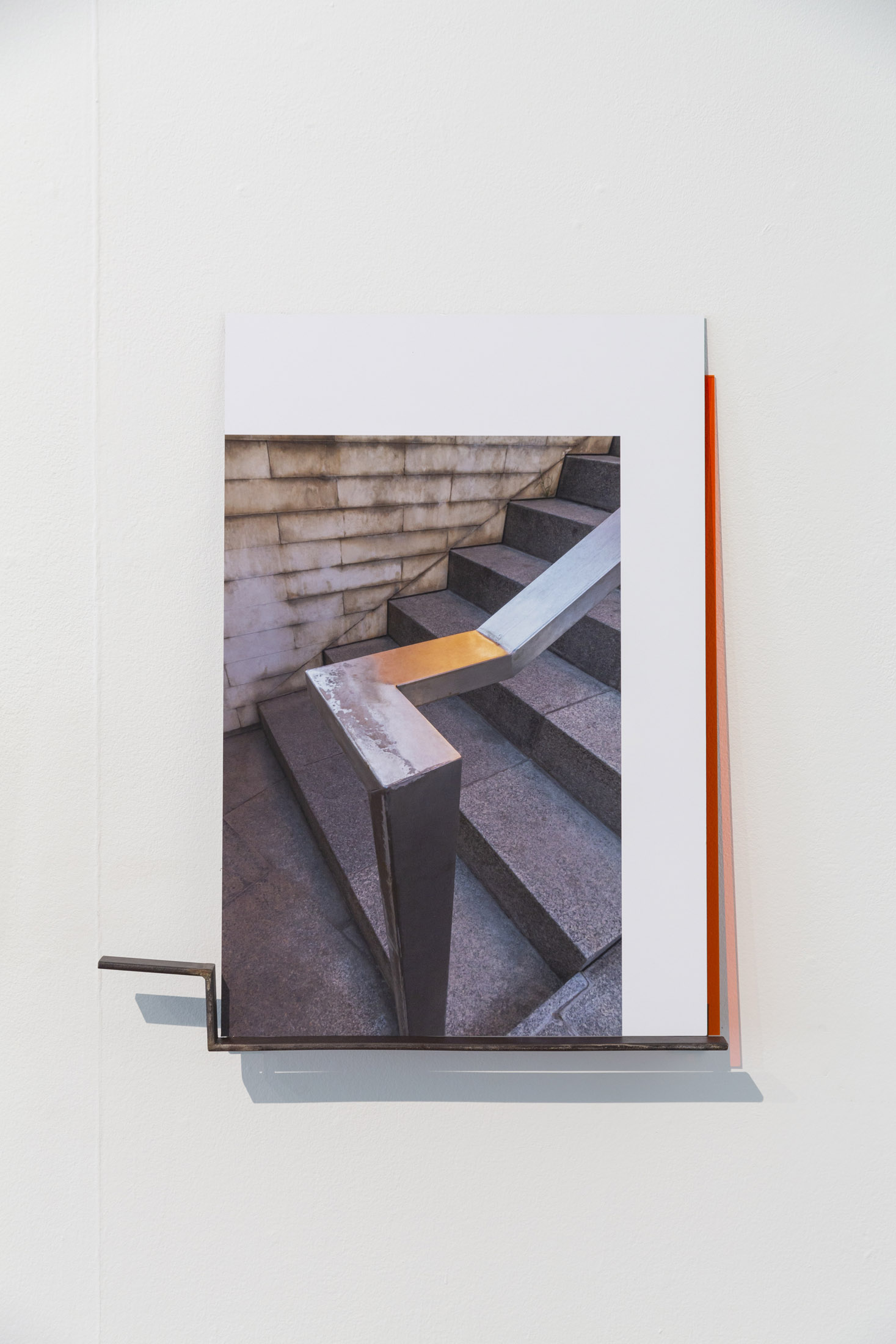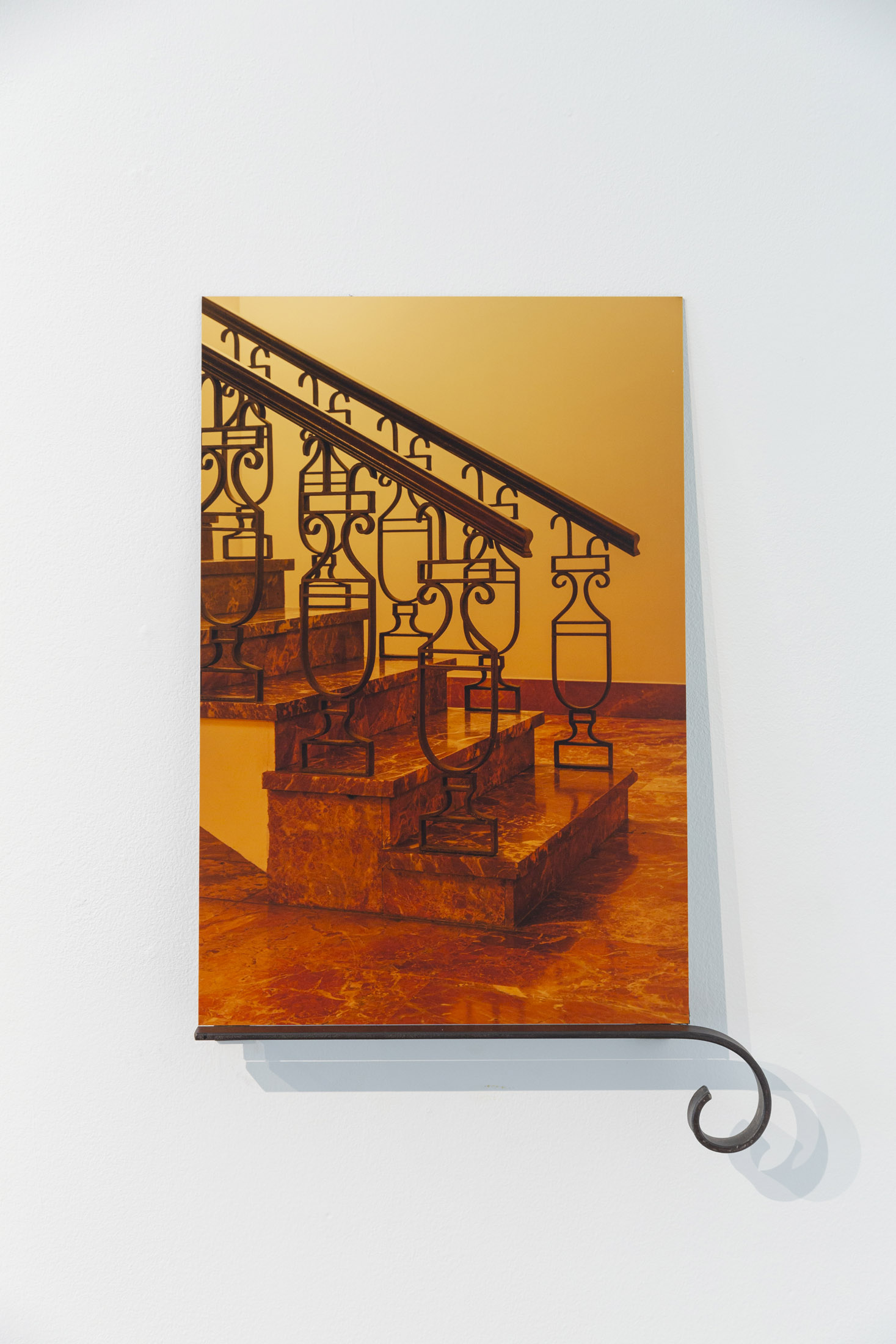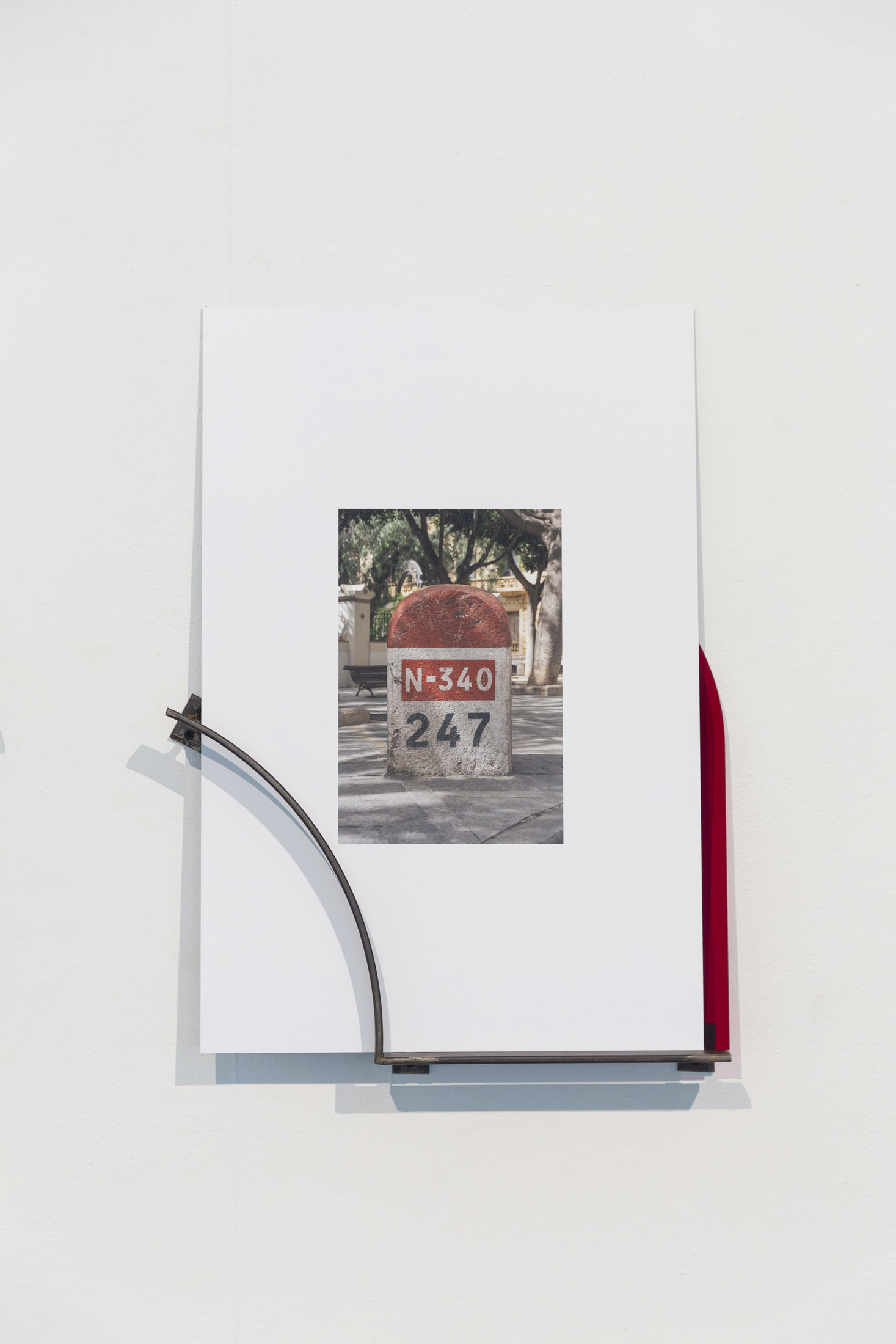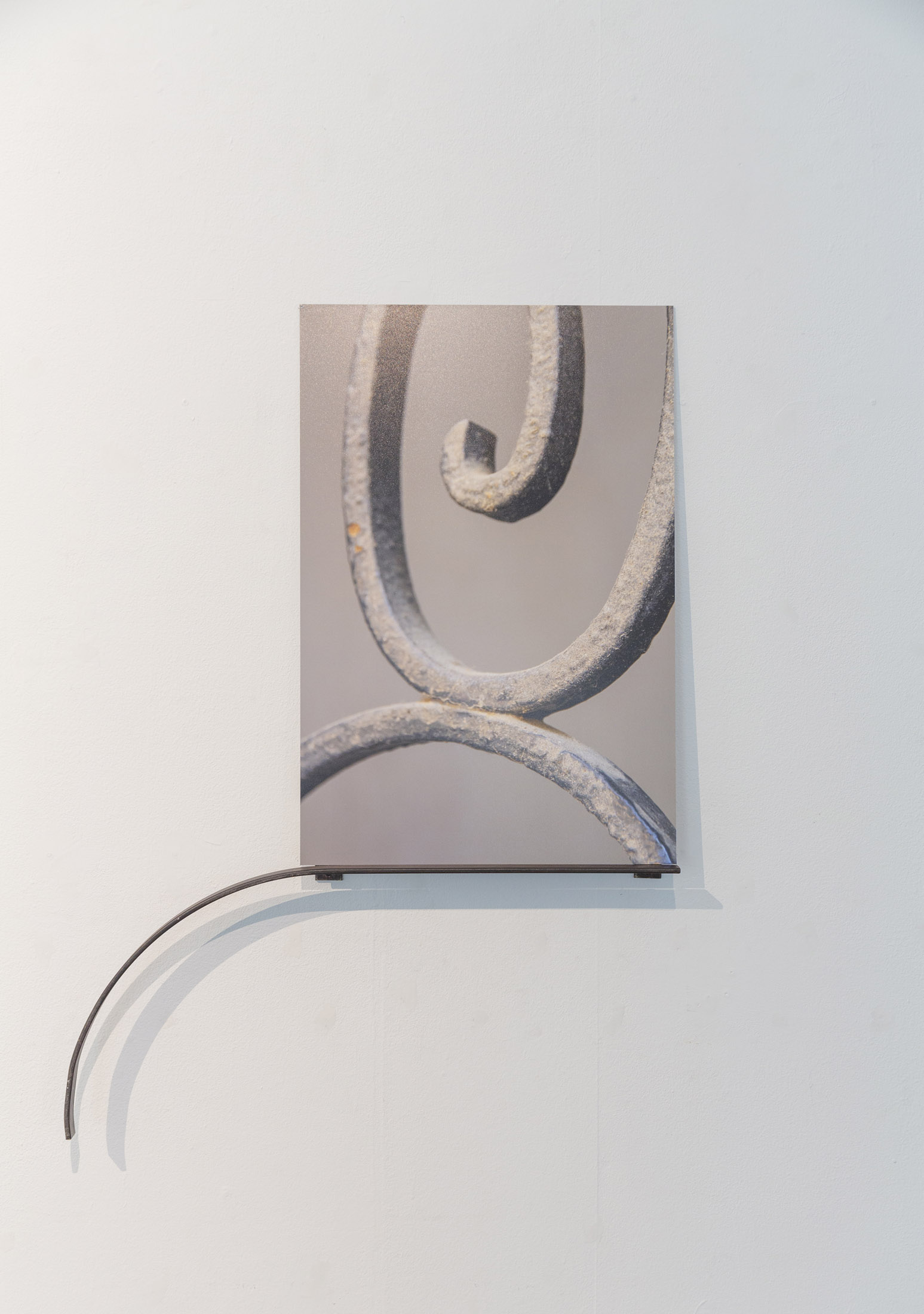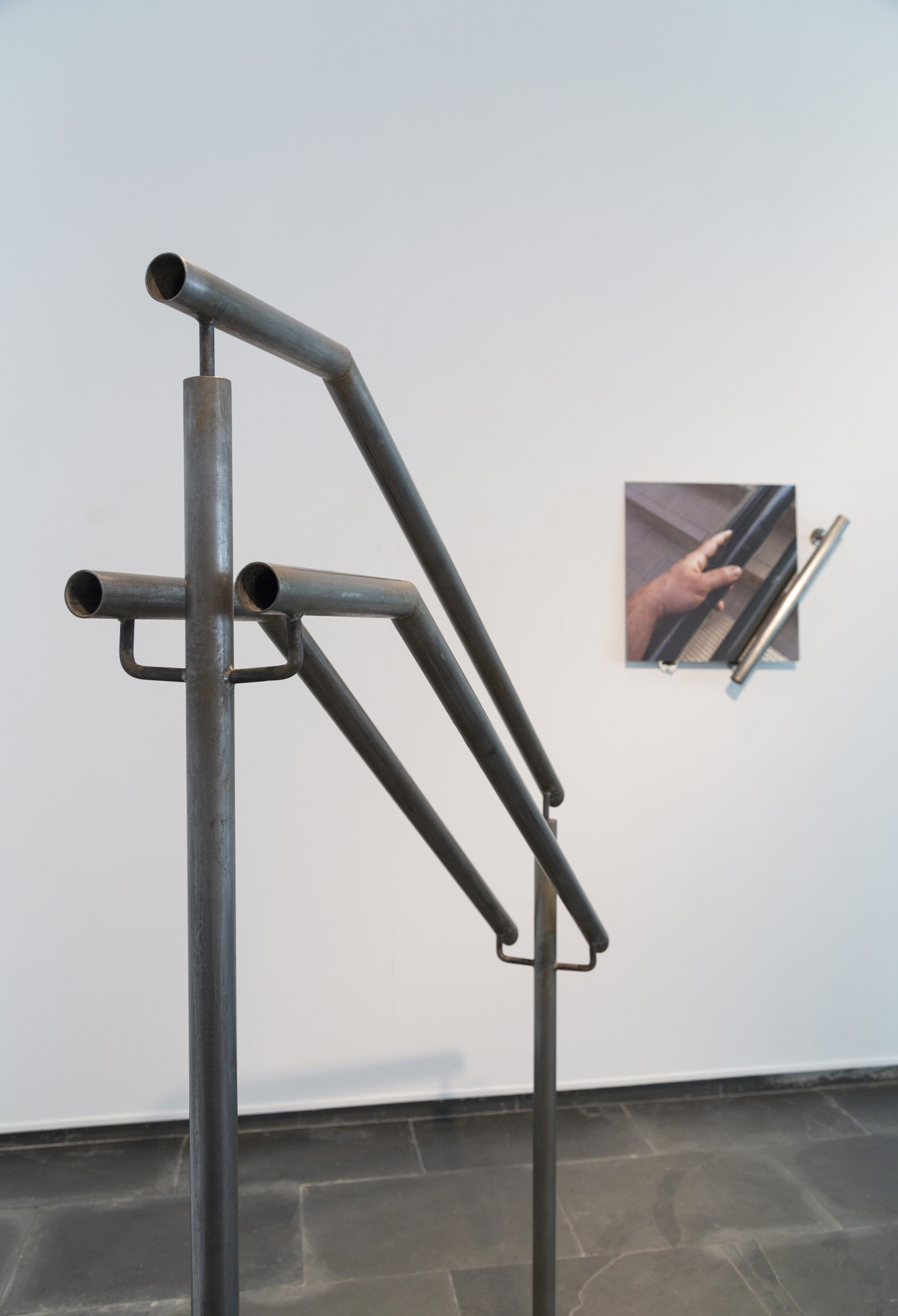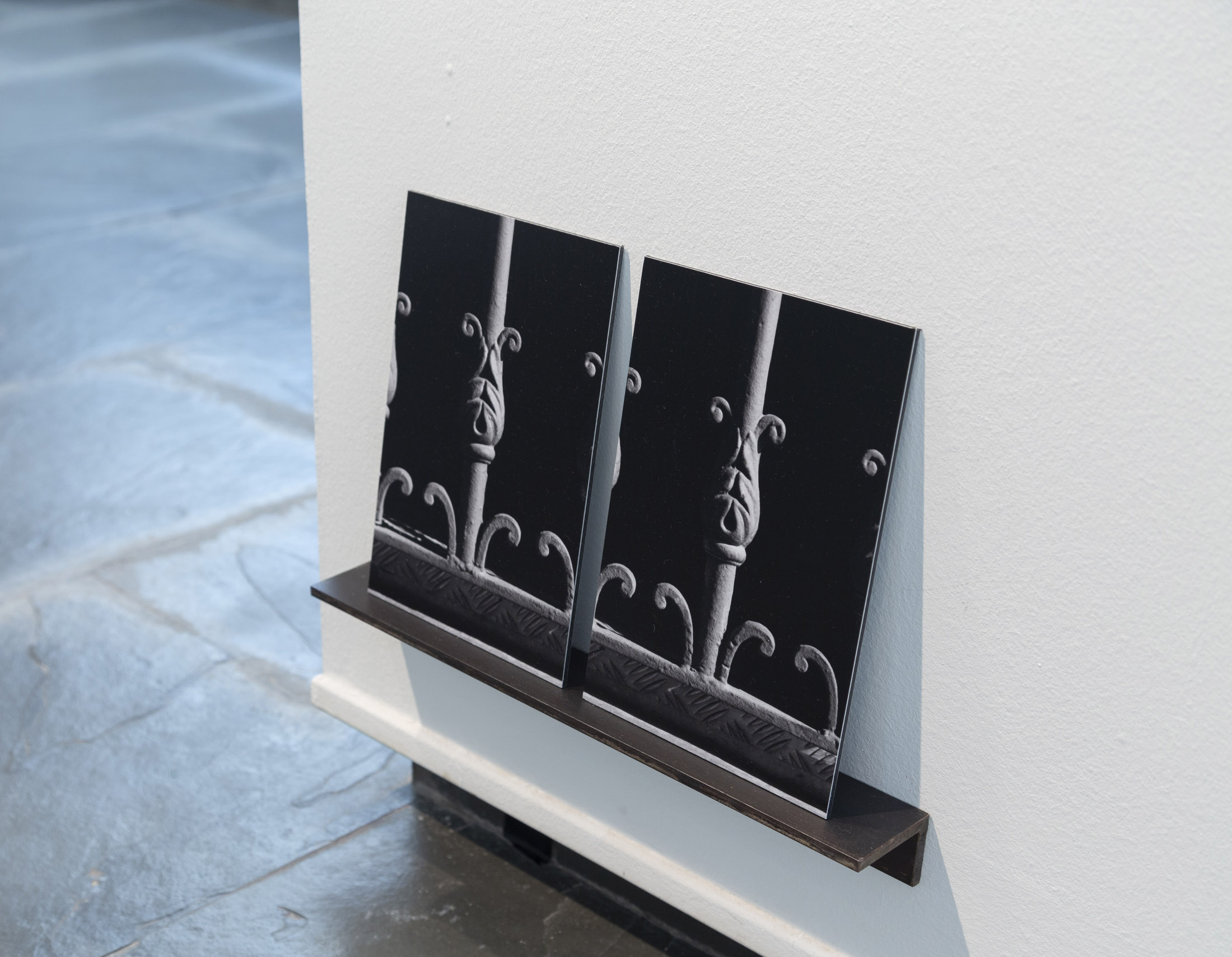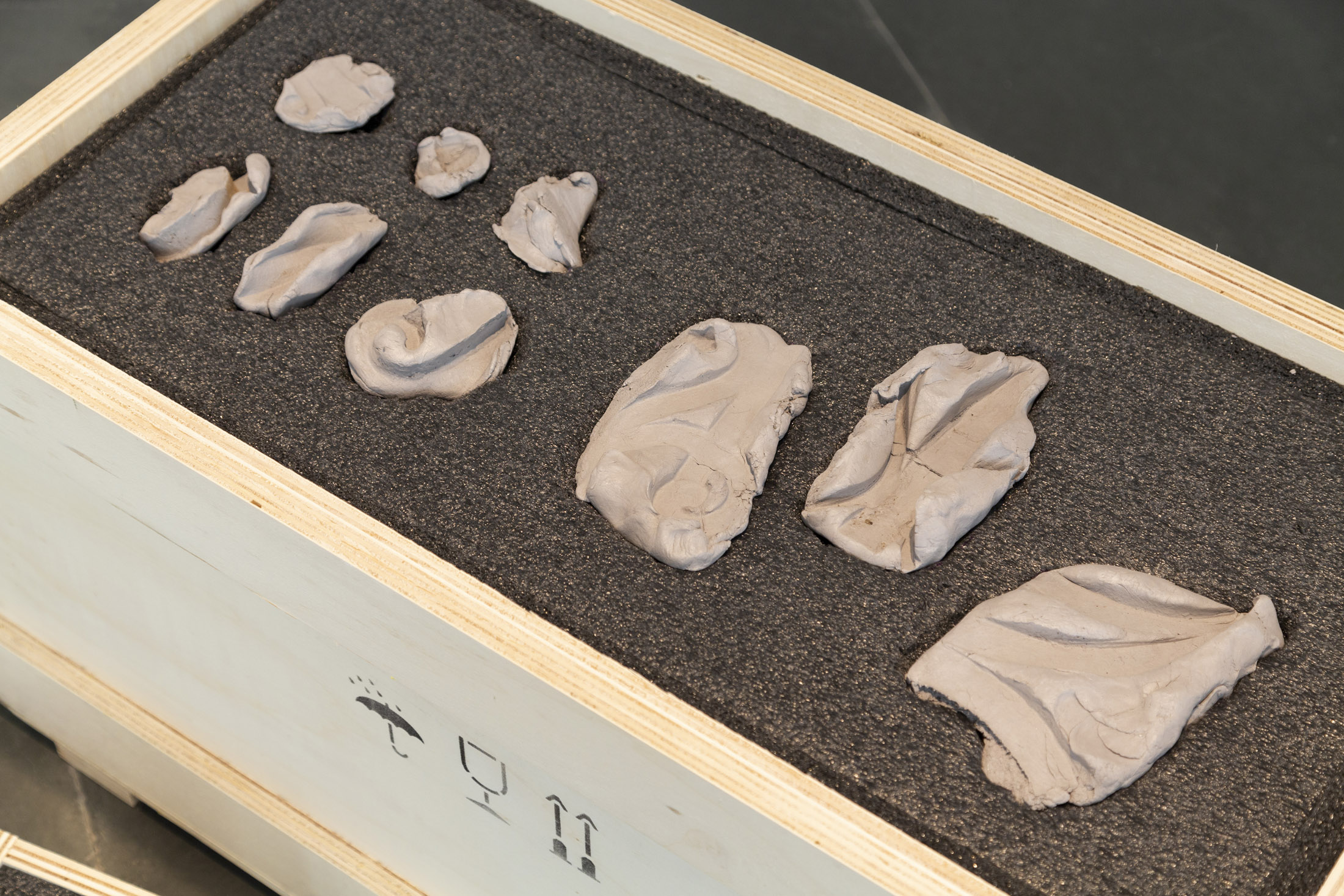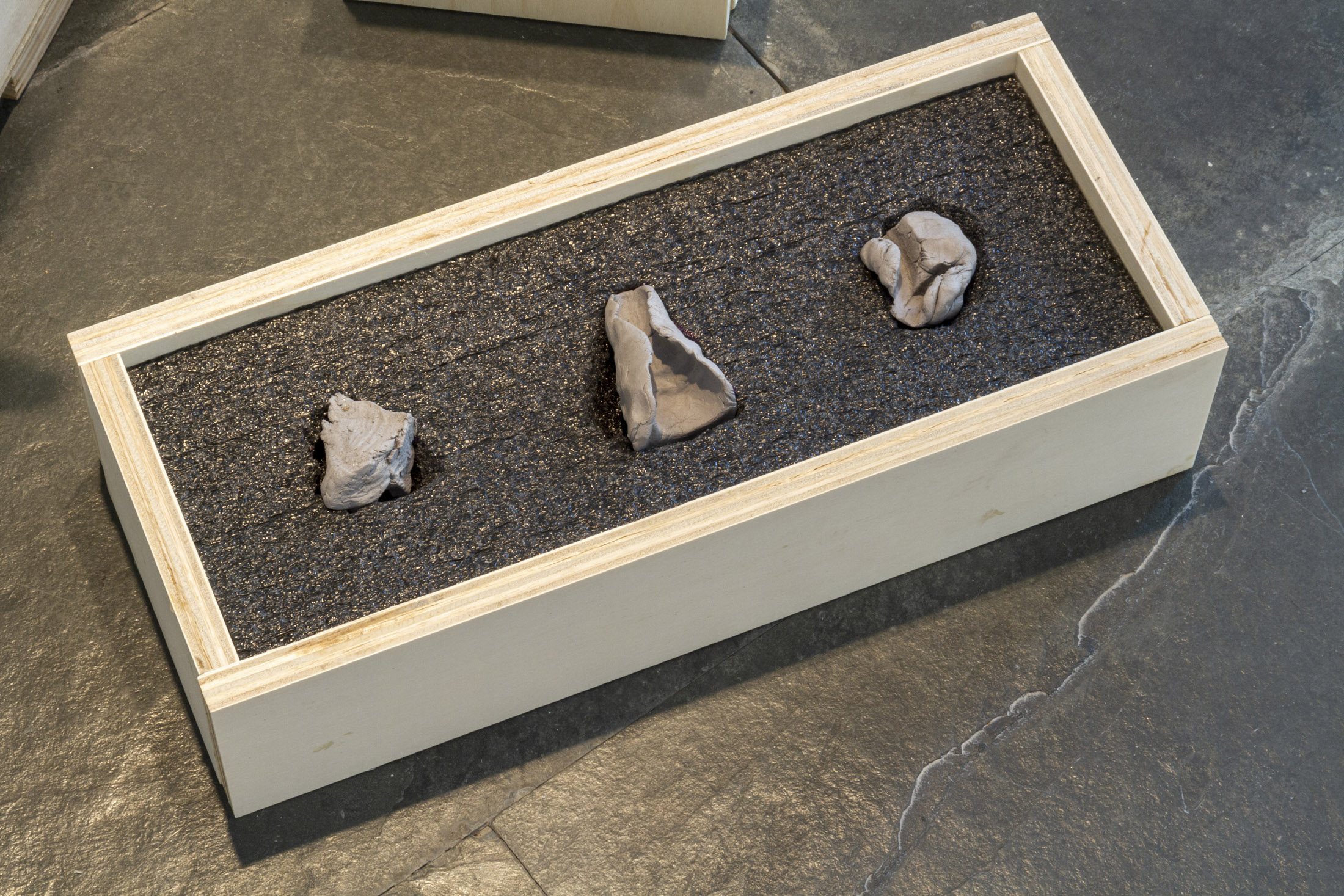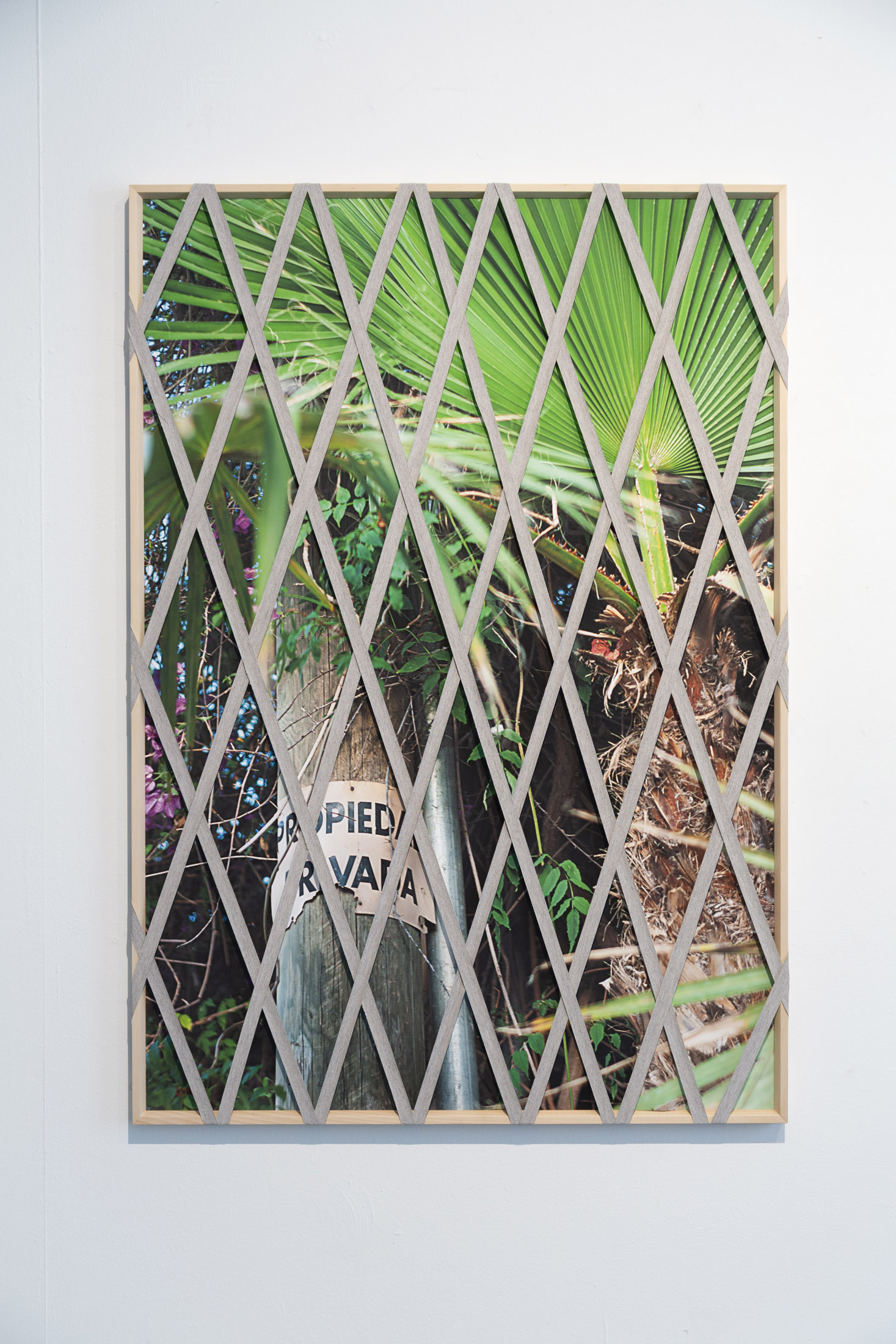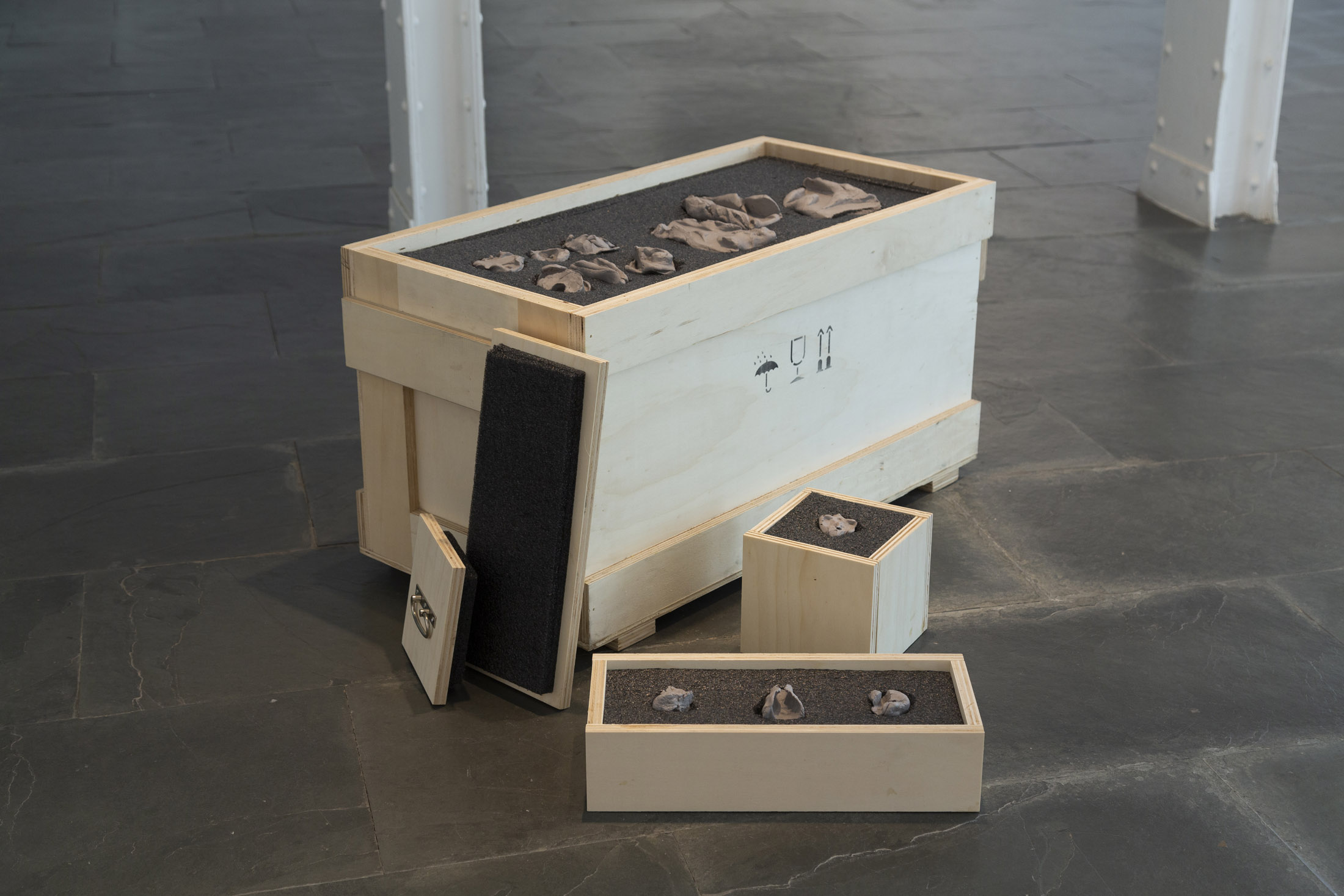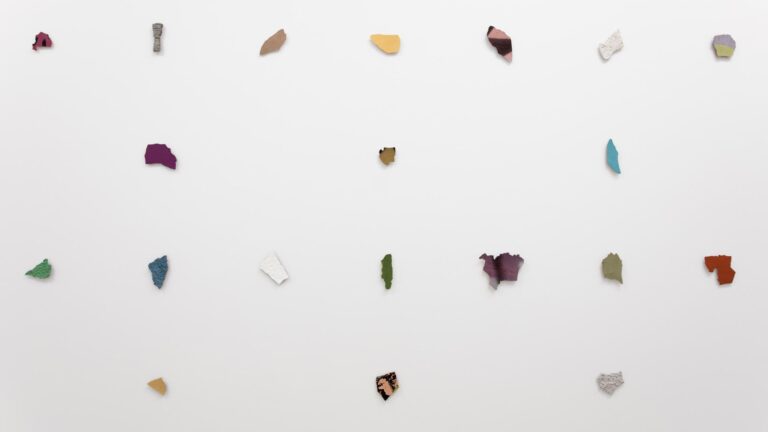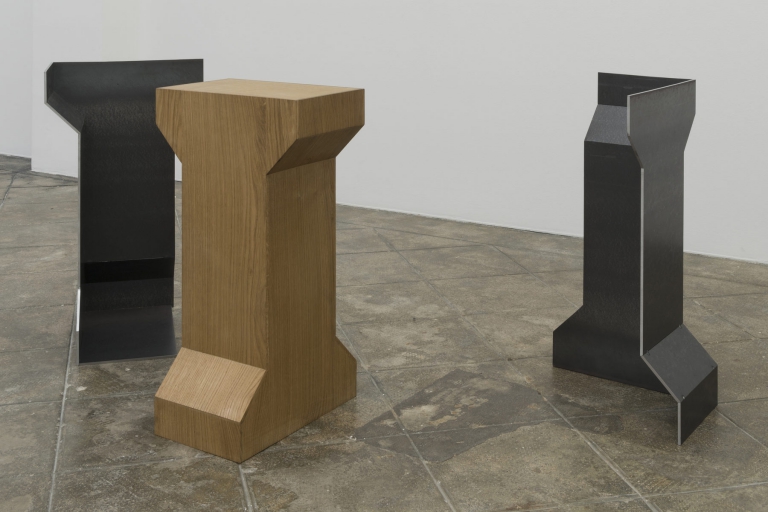Artist: Antonio R. Montesinos and Natalia Cardoso
Exhibition title: Orden abierto
Venue: Galería Isabel Hurley, Malaga, Spain
Date: June 22 – September 8, 2023
Photography: all images copyright and courtesy of the artists and Galería Isabel Hurley, Malaga
Orden Abierto is an exhibition created by Natalia Cardoso and Antonio R. Montesinos that questions the ways of organizing space. Using the Paseo de Reding street in Malaga where the gallery exhibiting the project is located as context and pretext, they examine some of the specific problems of managing the urban environment of a modern city.
Telling the story of a large modern city in the western world through the eyes, ears and experience of its inhabitants is another way of capturing the complexity of cities. In his book Flesh and Stone (1994) Richard Sennett discusses and describes the apparently insignificant physical reactions of the body in the public space to trace the geography of the modern city’s lineage. For example, the author analyses Doctor William Harvey’s discovery, in the mid 17th century, that blood circulating round the body was pumped by the heart1. The discovery consequently brought about an ever- growing secular concept of the individual and a gradual rejection of the idea of the soul as the source of the life force. This revelation occurred around the time of the birth of modern capitalism and the consideration of the individual above all as a peripatetic being. The start of 18th century saw the introduction of a new design for cities in which facilitating mobility was considered of prime importance. Town planning initiatives were undertaken and measures were designed to improve public health in cities. Furthermore, the new urban geography needed to take steps to respond to the demands of a new and growing middle class. Thus the transport and trade network of communication with other cities became a priority in this new order of things.
The trend towards rationalising urban life, expressed by the efforts made to organise the space and improve services brought with it greater control of the population. In the specific case of Malaga, a series of social and economic transformations took place in the second half of the 18th century that directly affected its town-planning. A considerable increase in population and the expansion of agriculture and trade brought prosperity to the middle-class nucleus and the city’s later industrialisation would bring about the reorganisation of Malaga society and its territory2. This new social class installed itself in areas like the Paseo de Reding, a quarter mile-long avenue which is the starting point of this project.
The arrangement and design of many of the elements that exist in the present town-planning of this street are the consequence of the transformations made in the city centre from the mid 19th until the mid-20th centuries by prestigious architects of the moment. Ultimately the Paseo de Reding became a place that demonstrated clearly the difference between the middle-class and other parts of the city.
The work of both Natalia Cardoso and Antonio R. Montesinos is the result of their personal and direct experience of this area. They have roamed its length and detected some of the elements with which we share the public space. They have taken and used them to point out the mechanisms of power that operate in urban planning and imply other truths unperceived at first glance. And lastly, by using a shift in direction they have put them on show, altering, distorting and stripping them of their useful value.
Natalia choses an architectonic element —the window grille— which represents on the one hand a separation of public and private spheres and on the other, a protection or barrier from the outside. She uses the types of grille-work popular in Malaga in the 18th century3: classic iron bars, the outward curving reja preñada or bulging grille or the lattice grille. However, far from making these in their traditional wrought-iron, she makes them from a printed canvas which she cuts and twists, superimposing them on another image, fencing them in or hanging them directly on the wall. In harmony with the shift of direction context, the artist makes small sculptures, the negative results of the elements imprinted in clay. These are surrounded with a protective foam and packed in boxes, showing once again a delicacy and vulnerability that contradicts the original object. Cardoso’s interest in these grilles obliges us to reflect on the prevailing representational system operating in this space that also controls our gaze.
Antonio R. Montesinos presents a photographic selection of architectonic details, urban equipment or objects typical of the urban space in which he has developed the project, superimposing other elements such as modelled metalic supports. Once again we observe the wrought-iron work seen in Cardoso’s work. This time, however they are inserted in the photographs to show us some of their details and blocked by these metal pieces whose hardness are a far cry from the fragile material used by Natalia. Two further series composed of various smaller photographs are hung in the room, forming a horizontal line that, picking up the same theme, conform a rhythmic composition.
Montesinos even inserts his own body into one of the photographs. His fragmented arm is shown, clutching a railing, essential support for moving up and down the steep streets around Paseo de Reding. There is a reproduction of the original railing shown in the photo over the photograph. And, placed next to it, the sculpture which, despite being part of the exhibition, invites us to copy the artist’s gesture and touch it.
This title of this exhibition ORDEN ABIERTO or OPEN ORDER refers to a military tactic that allows a squadron to scatter and advance to occupy territory. This chronicle allows the artists to reflect, on the one hand, on the concept of “order, and the arrangement of the different elements of the city, and on the other, by using the adjective “open”, to subvert them.
-Blanca del Rio
- De Motu Cordis (1628), title of the text by William Harvey in which he describes the mechanical functioning of the blood system around the body. Previously it had been believed that blood flow through the body was a result of each person’s innately endowed body temperature
- See https://rb.gy/13e1k
- See https://rb.gy/2ufhv

